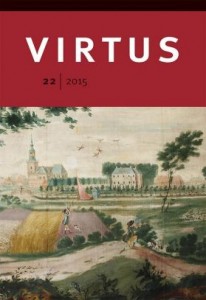Seigneuries in het county of Holland 1500-1795
In the Dutch Republic, the countryside of its most modern and prosperous part, the county Holland, consisted of hundreds of seigneuries. Although a seigneury could yield its owner significant power, prestige and economic benefit, until recently historians have not systematically researched the question who exactly the 17th and 18th century lords where. This website is part of an undertaking to share information and increase knowledge about the history of Hollands seigneuries.
Numerical decline of Holland’s nobility
Between 1500 and 1800 Holland’s noble families steadily declined in numbers, until by 1800 as few as six families where left. As nobles had held an overwhelming majority (eighty percent) of Holland’s seigneuries at the start of the Dutch Revolt (1567), this raises the question who became the new owners during the seventeenth and eighteenth century. Elite studies focussing on the regent class have tended to play down the patrician share, arguing that the bourgeois elite showed a typical disinterest for seigneuries.
Research project ‘Heren van Holland’
Since 2001, data was collected about over 2500 owners of Holland’s seigneuries between 1500 and 1795 and studies regarding seigneuries were compared. It has become possible to establish how many seigneuries there were, which groups acquired seigneuries as well as to analyse developments by comparing biographical data of owners, such as occupation or residence. Results of this research were presented in an article in Virtus. Journal of nobility studies, XXII (2015), ‘Lords of Holland. Ownership of seigneuries amongst nobels and regents in the county of Holland 1500-1795’.

Results
The collected data shows that Holland’s regents and their direct relatives slowly increased their share in seigneuries from the 1600 on. They had become the largest group of owners by 1720. As the total number of patricians greatly exceeded the number of seigneuries (in 1750 there were 460 vroedschappen, family members not included), titled regents naturally remained a minority. However, the amount of seigneuries owned by regents is striking, given the fact that they were not often sold (mostly one or two every year). Regents showed a strong preference for seigneuries close to the city where they held office. Although Holland counted many wealthy merchants, this group held few seigneuries, compared to the regents.